Ethiopia is a land of rich cultural heritage, and at the heart of its linguistic tradition lies a unique system of alphabets and numbers. Ethiopian alphabets, known as the Ge’ez script, and their numerical counterparts, exhibit a distinct origin, a fascinating growth, and hold immense cultural and historical significance. Let’s embark on a journey to explore the origins, evolution, and enduring importance of Ethiopian alphabets and numbers.
Origins and Ancient Heritage
The Ethiopian alphabets trace their roots back to the ancient Ge’ez script, believed to have originated in the Aksumite Kingdom around the 2nd century BCE. Ge’ez is one of the few indigenous writing systems in Africa and stands as a testament to the intellectual and cultural achievements of ancient Ethiopia. Its unique characters, derived from a Semitic origin, provide a visual representation of the language’s sounds and express the complexities of the Amharic and Tigrinya languages.
Growth and Adaptation
Over the centuries, the Ge’ez script evolved and adapted to reflect the changing linguistic landscape of Ethiopia. It became the foundation for various alphabets used in different regions and languages, such as Amharic, Tigrinya, Oromo, and others. The script underwent modifications to accommodate additional sounds and linguistic nuances, showcasing its flexibility and ability to serve as a linguistic tool for diverse communities.

Cultural and Historical Significance
The Ethiopian alphabets and numbers hold profound cultural and historical significance for the Ethiopian people. They are an integral part of Ethiopia’s identity and serve as a powerful symbol of national pride. The Ge’ez script has played a pivotal role in preserving Ethiopia’s rich literary and religious heritage, including the translation and preservation of religious texts such as the Bible and ancient manuscripts. It is also a source of artistic expression, as the calligraphy and decorative elements of the script adorn religious art, textiles, and architectural designs.
Preserving Cultural Heritage
The importance of Ethiopian alphabets and numbers extends beyond their linguistic and cultural value. They play a crucial role in preserving Ethiopia’s cultural heritage and fostering a sense of identity among its people. Efforts are made to promote the teaching and learning of the script in schools, universities, and cultural institutions to ensure its preservation for future generations. By embracing and celebrating the Ge’ez script, Ethiopians actively contribute to the continuity of their cultural legacy.
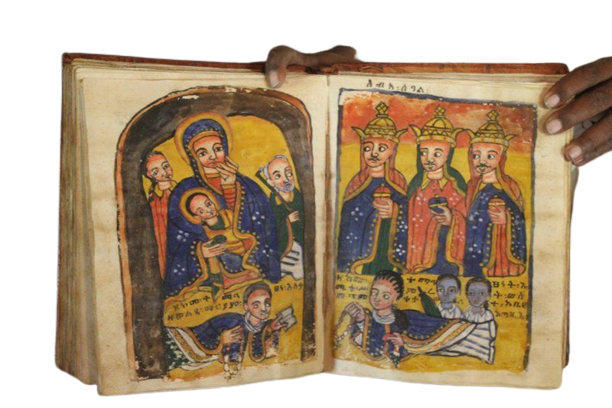
Global Appreciation
In recent years, there has been a growing global appreciation for Ethiopian alphabets and numbers. As travelers and linguists delve into the intricacies of the script, its unique beauty and historical significance captivate their curiosity. The Ge’ez script has also gained recognition as an UNESCO Intangible Cultural Heritage of Humanity, further highlighting its universal value and the need to safeguard its existence.
Linguistic Diversity and Unity
The Ethiopian alphabets and numbers act as a unifying force among the diverse linguistic communities in Ethiopia. While each language may have its own unique variations and pronunciations, the underlying script provides a common foundation that fosters communication and understanding. It promotes linguistic diversity while reinforcing the sense of unity among Ethiopians, emphasizing the shared cultural heritage that transcends linguistic boundaries.
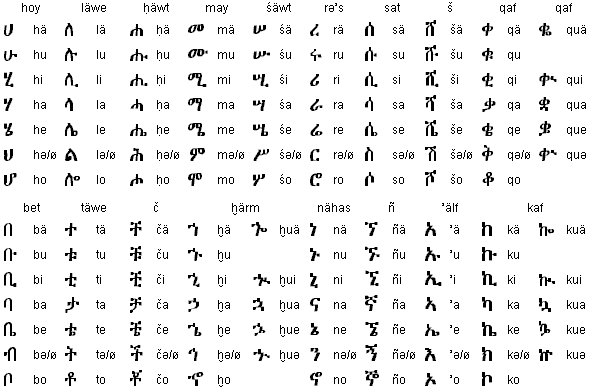
Educational and Cognitive Benefits
The learning and understanding of Ethiopian alphabets and numbers have profound educational and cognitive benefits. Mastering the script enhances language skills, reading comprehension, and critical thinking. It stimulates cognitive development, improves memory retention, and nurtures analytical skills. The process of deciphering and writing the characters fosters mental agility and boosts creativity. Additionally, the study of Ethiopian alphabets and numbers cultivates a deep appreciation for linguistic diversity and cultural heritage.
Symbol of Resilience and Independence
Throughout history, Ethiopian alphabets and numbers have served as a symbol of resilience and independence. The preservation and continued use of the Ge’ez script, despite external influences and cultural changes, signify Ethiopia’s ability to maintain its unique identity and cultural autonomy. It stands as a testament to the strength and determination of the Ethiopian people to safeguard their heritage, language, and traditions in the face of external pressures.
Bridge to the Past and Future
Ethiopian alphabets and numbers provide a bridge that connects the past, present, and future of Ethiopia. They link contemporary generations with their ancestors, allowing for a deep understanding of the historical roots and traditions that have shaped Ethiopian culture. By passing down the knowledge of the script to future generations, Ethiopians ensure the continuity of their linguistic and cultural legacy, strengthening the bond between past, present, and future.
Inspiration for Art and Design
The aesthetic beauty of Ethiopian alphabets and numbers has inspired various art forms and designs. The intricate shapes and strokes of the characters have been incorporated into traditional and contemporary art, including painting, sculpture, jewelry, and textile patterns. The script’s elegance and cultural significance serve as a wellspring of inspiration for artists and designers, who reinterpret and infuse the script’s motifs into their creations, adding a touch of Ethiopian heritage to the world of art and design.
Ethiopian alphabets and numbers stand as a remarkable testament to Ethiopia’s linguistic, cultural, and historical heritage. From their origins in the ancient Ge’ez script to their adaptation and use across diverse languages, these unique systems of writing embody the resilience, unity, and rich cultural tapestry of Ethiopia. They serve as a bridge between the past and future, promoting linguistic diversity, cognitive development, and a deep sense of cultural pride. As Ethiopians continue to embrace and celebrate their alphabets and numbers, they preserve their cultural heritage and ensure its vibrant existence for generations to come.
Ethiopian alphabets and numbers embody a remarkable heritage of origin, growth, and significance. From their ancient origins in the Ge’ez script to their adaptation and use in various languages, these unique systems of writing serve as a living testament to Ethiopia’s linguistic, cultural, and historical richness. Their importance extends beyond language, influencing art, literature, religion, and the preservation of cultural heritage. By embracing and cherishing the Ethiopian alphabets and numbers, the people of Ethiopia honor their collective past and pave the way for a vibrant future, where cultural diversity and linguistic identity thrive.
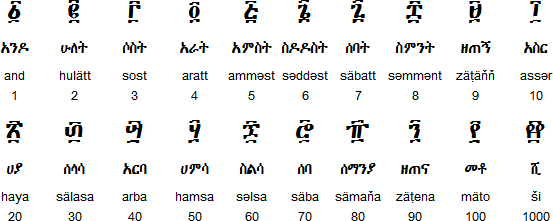
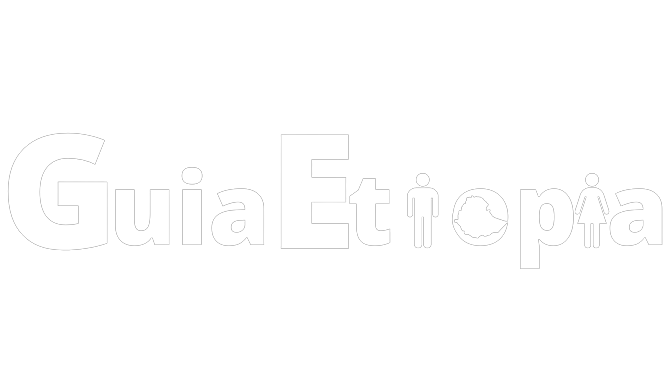
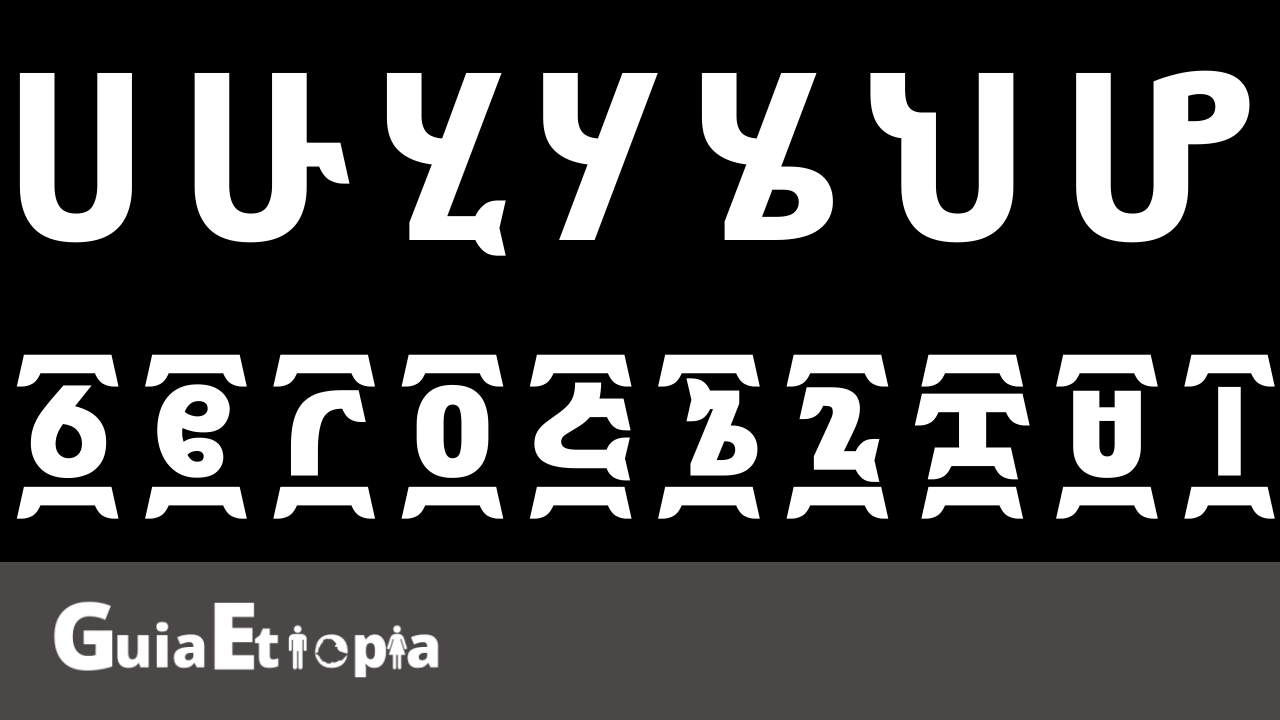
Comment (0)